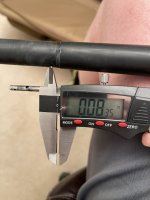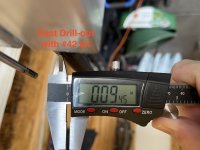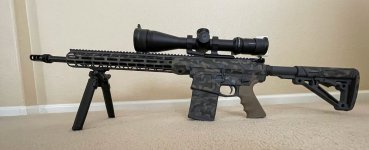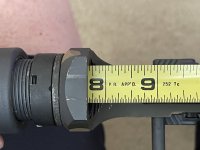Bottom line up front: What’s the most cost effective spring/buffer combo to slow down premature ejection problems?
I’m having trouble with my suppressed AR10 308 unlocking while still under pressure. I‘m shooting mild loads and getting ejector smears, extractor damage on case rim, and super dirty brass. I do not have flattened primers and I am ejecting at 3:30-4:00. I have searched the Hide and found some good info - including this one that shows my exact problem: Ejector swipes on suppressed AR10
I have an AR-Stoner 5.3 oz buffer (actual weight 5oz on my scale) and a Superlative AGB (open 4 clicks). Buffer spring is from a local gun store but I don’t think it’s a heavy spring.
Which spring/buffer combo that I should try that will slow it down? I know the JP SCS H2 is highly recommended but I don’t want to spend $200 if it’s not going to solve the problem. Are there cheaper options? Better options?
Aero M5
BA 18” 308 bbl
unmarked bolt from LGS (maybe Toolcraft?)
AR-Stoner heavy buffer
SA AGB
Picture shows results from 168gr FMJ over 40.5 and 41.0 I4895

I’m having trouble with my suppressed AR10 308 unlocking while still under pressure. I‘m shooting mild loads and getting ejector smears, extractor damage on case rim, and super dirty brass. I do not have flattened primers and I am ejecting at 3:30-4:00. I have searched the Hide and found some good info - including this one that shows my exact problem: Ejector swipes on suppressed AR10
I have an AR-Stoner 5.3 oz buffer (actual weight 5oz on my scale) and a Superlative AGB (open 4 clicks). Buffer spring is from a local gun store but I don’t think it’s a heavy spring.
Which spring/buffer combo that I should try that will slow it down? I know the JP SCS H2 is highly recommended but I don’t want to spend $200 if it’s not going to solve the problem. Are there cheaper options? Better options?
Aero M5
BA 18” 308 bbl
unmarked bolt from LGS (maybe Toolcraft?)
AR-Stoner heavy buffer
SA AGB
Picture shows results from 168gr FMJ over 40.5 and 41.0 I4895




